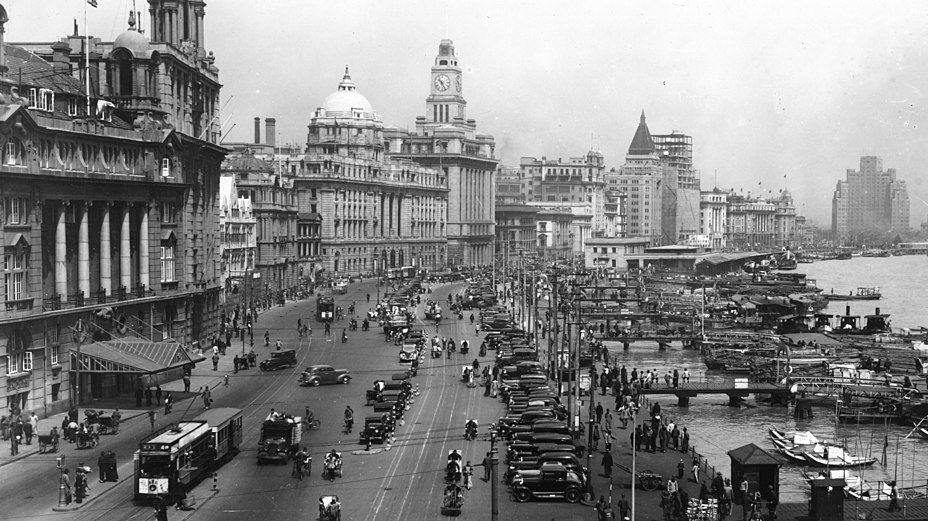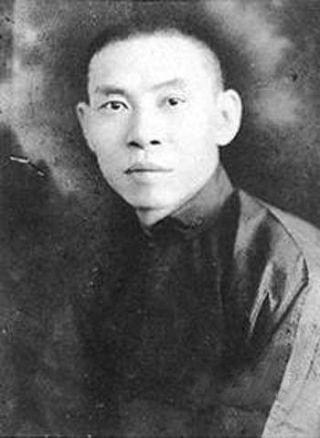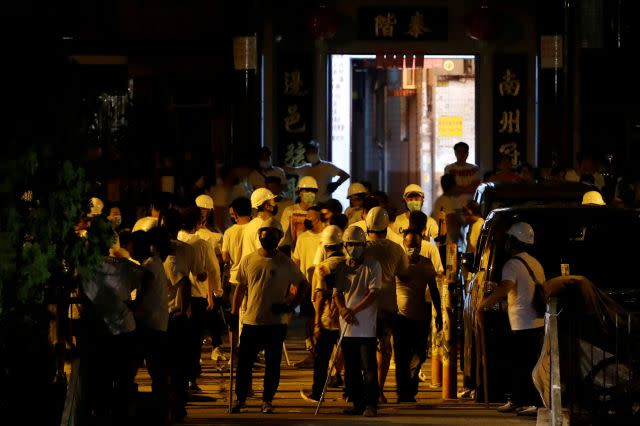Can Hong Kong’s fighting spirit endure? An answer might lie in China’s own Communist history

In three short months, Hong Kong has morphed into a city of bloody weekend skirmishes between black-clad protesters and riot police; a city clouded with teargas, where water cannon trucks spray youngsters with blue-dyed water; and where passionate demonstrations erupt regularly, everywhere from shopping malls to consulates. I hardly recognize the city I’ve lived in, on and off, for 25 years. Instead, the turbulent, early history of mainland China that resulted in a Communist-ruled country, now about to celebrate the 70th anniversary of its founding, comes often to mind.
Hong Kong’s protests began with the demand that the government withdraw a controversial extradition bill that would have allowed people to be sent to mainland China to face trial—and earlier this month the government grudgingly agreed. But the government’s missteps renewed longstanding grievances, and now the protesters want much more, leading many to wonder how long they can go on, and what sort of victory, if at all, they can eventually hope to wrest.
The events of this summer echo the conflicts that played out a century ago in the streets of Shanghai—another city that has been home—decades before the Chinese Communist Party (CCP) climbed to its current dizzying height of power, driven at present by its general secretary Xi Jinping. It was in Shanghai, in the 1920s and 1930s, that China’s early communist movement was born and faced persecution from the Kuomintang, or Nationalist party, their rivals during the political fragmentation that followed the fall of the Qing, the last imperial dynasty.
The founders of Chinese communism were mostly young, passionate people who were profoundly concerned with modernizing their nation and with ousting foreign rulers who had humiliatingly snatched concessions from China in “unequal treaties” signed after the Opium Wars of the mid-19th century—which ceded Hong Kong to Britain and created, among others, Shanghai’s famed French Concession. They were determined to eradicate the great inequalities plaguing their society. They examined ideals such as freedom of thought and constitution.
Consider the 1916 essay, “The Constitution and Freedom of Thought,” written in the May 4 era, a time of fascination with new foreign ideologies like Marxism amid a desire to overturn China’s own feudal beliefs and systems. In the piece, Li Dazhao, a key figure in the movement who would help found the CCP in 1921, wrote:
Now all people dislike death and want to live. Since they are willing to pay even with the sacrifice of their lives in order to seek freedom, the value of freedom must be as great as that of one’s life, or perhaps even greater… If we look, we will find that none of the great efforts in the history of human life fails to derive from the search for freedom.
Which Hong Kong protester would argue with that statement? The millions of Hong Kongers marching on the streets seek political reform, and they would like to protect Hong Kong’s rule of law and freedom of speech. They would like Beijing to quit interfering and stick to the terms of Hong Kong’s Basic Law constitution, which guarantees the territory autonomy for half a century after its return to Chinese rule in 1997. Hong Kong’s young would like to elect their own leaders.
About 100-odd years separate the two movements in Hong Kong and Shanghai: the protagonists have changed, the slogans differ, and technology has leaped into the future. But the methods of repression remain startlingly familiar, with Beijing folding the same tactics once used against the Party’s founders into its own vocabulary of repression.
In China, Kuomintang chief Chiang Kai-shek’s brutal suppression of China’s fledgling communist movement, alongside the establishment of his new Nationalist government in Nanjing, was called the White Terror—a phrase that has been frequently used in Hong Kong this summer.

The feared Du Yuesheng.
In Shanghai, that repression was launched with a bloody purge on April 12, 1927, conducted with the help of a motley army assembled by the omnipresent, triad-like Green Gang and its powerful chieftain Du Yuesheng. Scores of Communist marchers died and Shanghai’s streets ran red with blood. Shanghai’s French Concession police and the Kuomintang regularly called on the services of Du, in return for permission to conduct his illegal opium business unhindered.
In Hong Kong, near the end of July, news broke of how over 100 unidentified men dressed in white and armed with batons slashed into crowds at Hong Kong’s Yuen Long Mass Transit Railway (MTR) subway station. There were young protesters returning home from a march, but many of the injured were ordinary civilians. The perception goes that police were distressingly, intentionally slow to act. Later, it emerged that China’s Liaison office—the office representing Beijing’s central government in Hong Kong—had sent an official to attend a village banquet and appeal to local residents to chase anti-government activists away. On Aug. 31, riot police, in an attack that for many in the city resembled far too strongly the thug-led beatings in Yuen Long, unleashed a hail of batons on youngsters inside the MTR station of Prince Edward.

Men in white, carrying sticks, spotted on nearby streets after the Yuen Long train station attack.
There are economic parallels too: To survive, the Kuomintang needed money and Chiang extended protection to Shanghai’s wealthy merchants and bankers in return for regular infusions of cash to bolster his government and strengthen his army to fight the Communists. When Zhang Jia’ao, the general manager of the Bank of China resisted, finance minister H.H. Kong deftly brought the assets of the Bank of China’s under Nationalist control in 1935—something the Bank of China still bitterly references on its website.
In Hong Kong, banks like HSBC, Standard Chartered, and the Bank of East Asia last month weighed in after protests disrupted the airport, buying advertisements in Hong Kong papers, calling for peace and stability. China openly threatened Cathay Pacific’s operations when Cathay staff expressed pro-democracy leanings, including support for strikes. China also appears to have put pressure on Hong Kong’s MTR to cooperate, which allows police to limit getaway options for protesters and block access to stations near planned protests. Last week, China turned to its own businesses and urged them to play a bigger role in Hong Kong.
In China, Chiang’s loyal spymaster Dai Li oversaw a terrifyingly effective net of informants and strongmen who raided homes and offices, monitored leaders, and infiltrated unions to whisk away key people. Today, the unofficial “uniform” of protesters in Hong Kong includes face masks and goggles to obscure their identities. People fear being doxxed—having their offline or online support for the Hong Kong movement exposed, possibly by colleagues or acquaintances. With its technological rise, China has embellished the system of informants with sophisticated facial-recognition software, which Hong Kongers now fear is installed inside the city’s new smart street lamps.
Scholars say Chiang’s secret service ordered the assassination of Shanghai newspaper magnate Shi Liangcai in November 1934, when his influence over popular opinion became too strong. In Hong Kong, on Sept. 4, two men threw petrol bombs at the house of Jimmy Lai, owner of the pro-democracy Apple Daily paper he founded in 1995. Others in the democracy movement—particularly protest organizers—have also faced direct attacks.
China’s long-ago Communists were driven underground and forced out of Shanghai. Chiang chased them to the mountains of Jiangxi, bombarding them till a column of the Red Army broke out in 1934 and began the harrowing 12-month Long March to establish new headquarters at Yan’an in Shanxi province. The Red Army and the Nationalists united briefly to fight Japan until 1945, after which they again turned on each other and continued their bloody civil war until a victorious Mao Zedong declared on Oct. 1, 1949 the creation of a Communist-ruled People’s Republic of China.
It took 28 years and cost millions of lives.
This year, perhaps ageing Communists within the walls of their Beijing headquarters, Zhongnanhai, are watching Hong Kong’s energetic protesters, who carry scribbled wills and last testaments in their backpacks as they head out each weekend. The ageing Communists may recall their forefathers, a ragged band of 12 idealists who in July 1921 met for the party’s inaugural National Congress on the grounds of a school in the shade of Shanghai’s French Concession.
Until the absolute last minute, many doubted that the Communists would win the civil war and found a nation, let alone a nation celebrating its 70th birthday in 2019. From that tattered victory in 1949, followed by further decades of self-inflicted upheaval, the Communists eventually transformed China, and constructed a tentacled, powerful empire with global reach.
Who knows what Hong Kong’s young, awakened generation might achieve? By some numerical coincidence, there are 28 years left until the autonomy legally granted Hong Kong meets the deadline of 2047.
Sign up for the Quartz Daily Brief, our free daily newsletter with the world’s most important and interesting news.
More stories from Quartz:

